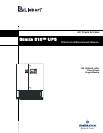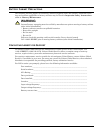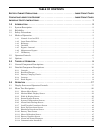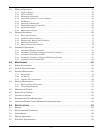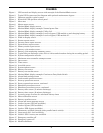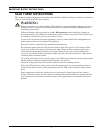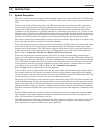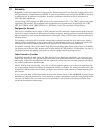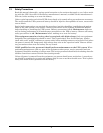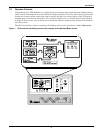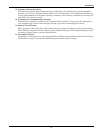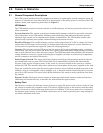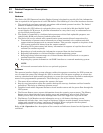
Introduction
2
1.0 INTRODUCTION
1.1 System Description
The role of a UPS system is to supply uninterruptible, clean power to the critical load. The UPS main-
tains a full-voltage, low-distortion output, even if the utility source power sags, becomes distorted or
fails.
If there is an outage of the source power, the UPS maintains power to the load until an alternate
source of power is activated or until the original power source is restored. If input AC power is not
restored, the UPS maintains the load (with a storage battery plant) long enough that the critical
equipment can be shut down in an orderly manner or an alternate power source (e.g., Genset) can be
brought on line. The Series 610 UPS module displays the rate of battery discharge and calculates the
amount of battery time remaining based on the actual connected load. The time that the battery will
maintain the load depends on the capacity of the battery backup plant and the size of the load.
The system control logic automatically manages critical bus operation. System logic is resident in dig-
ital control logic for precise control and improved reliability.
If the critical load current exceeds the rated load of the Series 610 UPS system, the control logic deter-
mines the magnitude of the overload and reacts appropriately. Overloads are usually the result of
inrush current requirements. The UPS system supports loads that are 150% of the rated load for up
to 30 seconds, 125% of the rated load for up to 10 minutes and 104% of the rated load indefinitely.
Refer to 3.5.4 - Automatic Transfers to Bypass (UPS System Faults).
If the load surpasses the overload capacity of the UPS, the load is automatically transferred to a
bypass AC source without interruption, typically a second AC feeder into the UPS module. When the
load returns to within the UPS rating, it is either automatically or manually returned (retransferred)
to the UPS. How and when the load is returned to the UPS depends on several factors: how long the
overload lasted, how many overload conditions occurred before transfer, whether there is an immi-
nent failure of any part of the UPS, etc. Refer to 3.5 - Automatic Operations.
Refer to Figure 2 for a typical system one-line diagram.
In the unlikely event of a fault within the UPS, the control logic, which continuously monitors all crit-
ical circuits within the UPS system, transfers the load to bypass without interruption and simulta-
neously activates local and remote alarms. For a few specified faults, the UPS is shut down. The UPS
can be manually returned to service when the fault has been corrected.
The Series 610 UPS display system provides precise monitoring of the UPS, fast alarm response and
quick troubleshooting. For easy manual operations, menu-driven software provides access to several
step-by-step help screens. All operator functions are performed using menu-prompted displays and a
minimum number of operator controls. Available options include external communication capability
with both automatic transmit and receive features for early warning and diagnosis of abnormal condi-
tions.
System software allows the operator or Liebert Global Services to enter application specific informa-
tion. Overload, overvoltage, battery discharge and shutdown limits can be set by the operator. In
effect, UPS operations are tailored for each site.
The UPS system protects critical equipment from source power disturbances and outages, load faults
and UPS malfunctions. This triple protection virtually eliminates computer and computing equip-
ment downtime as a result of utility source power problems.



